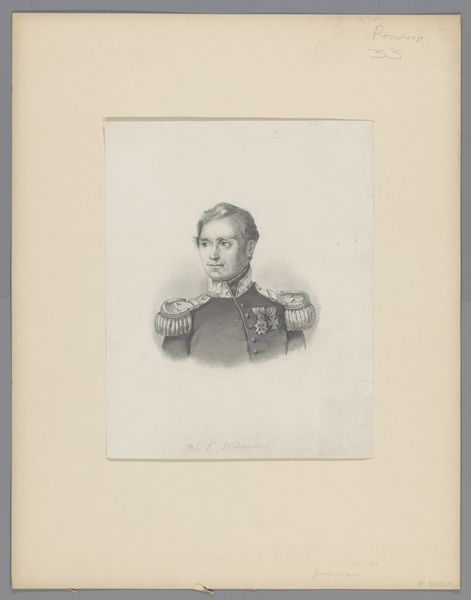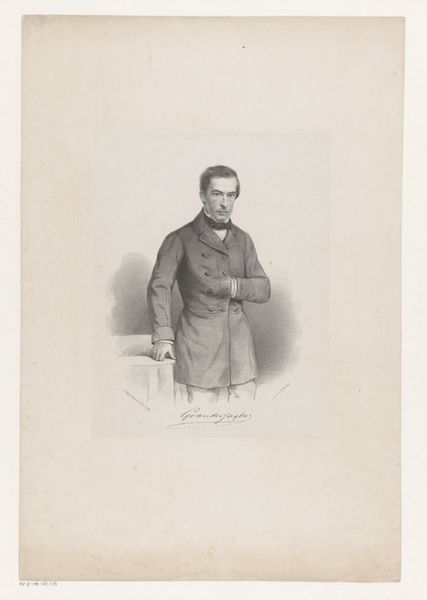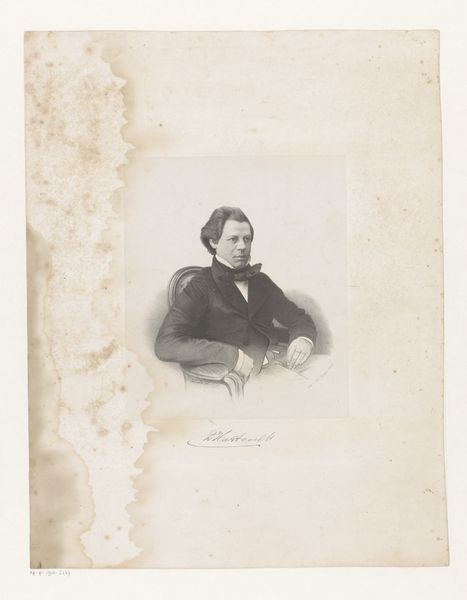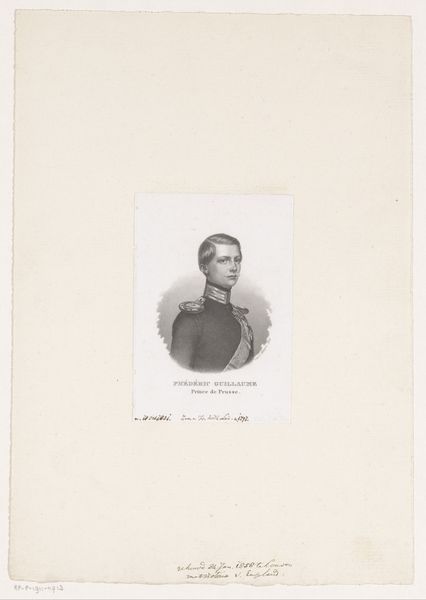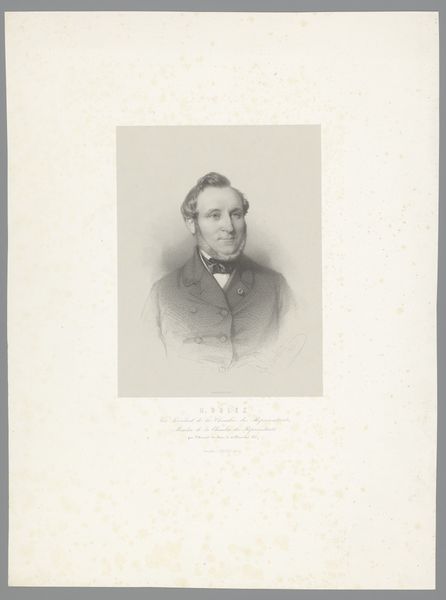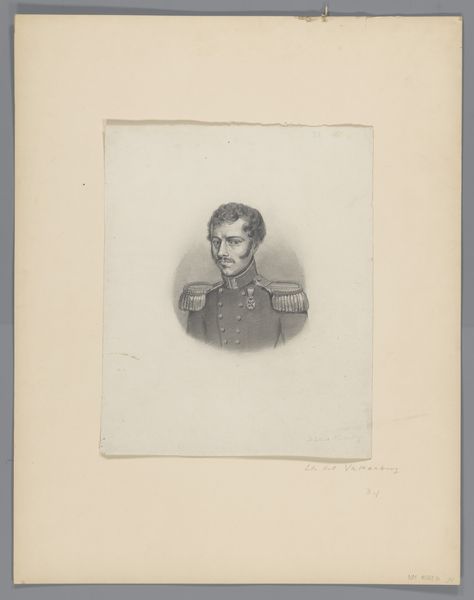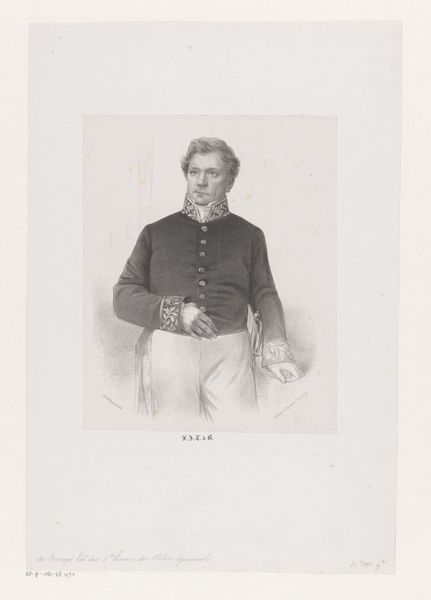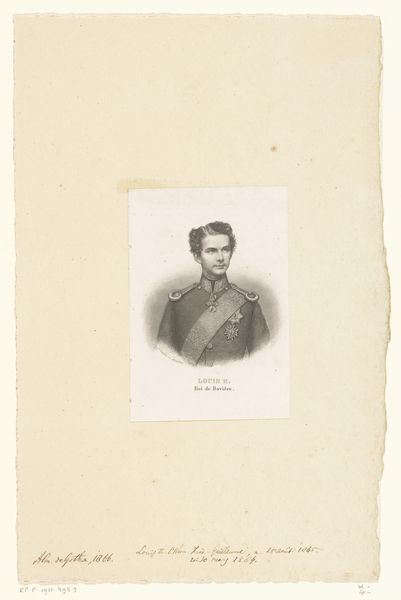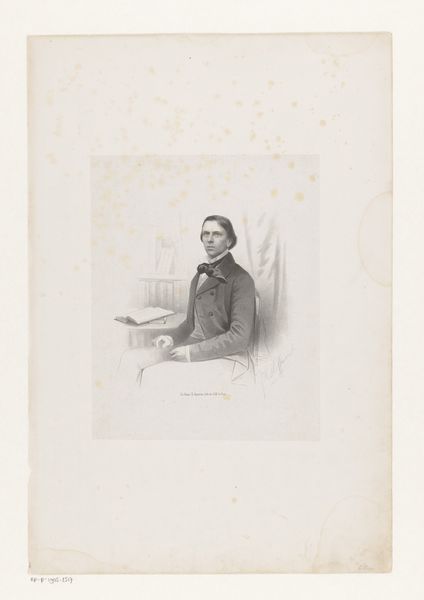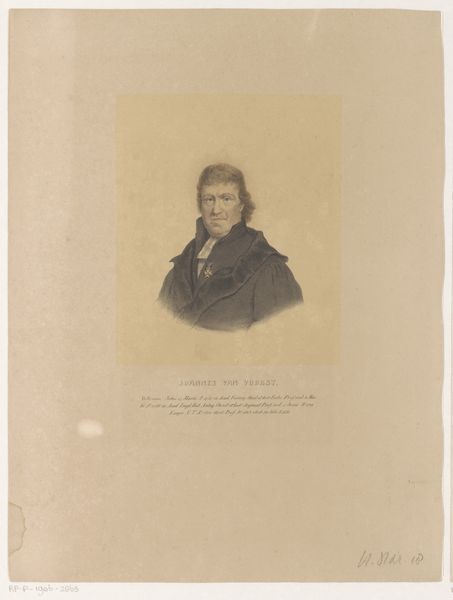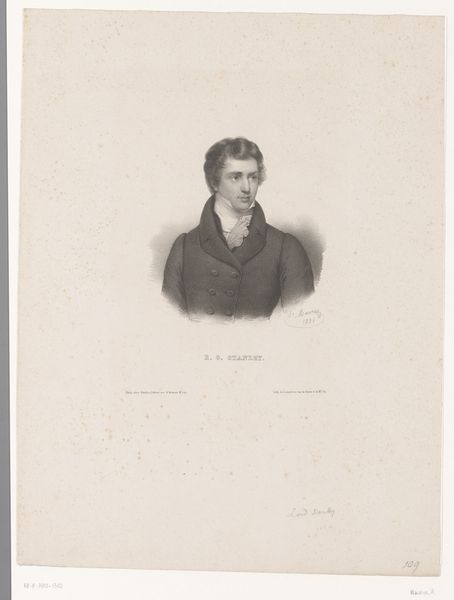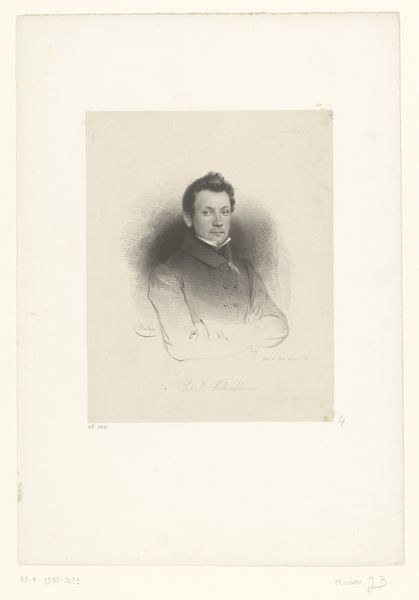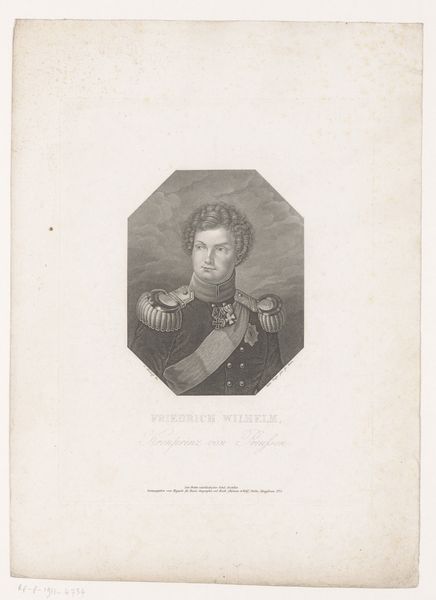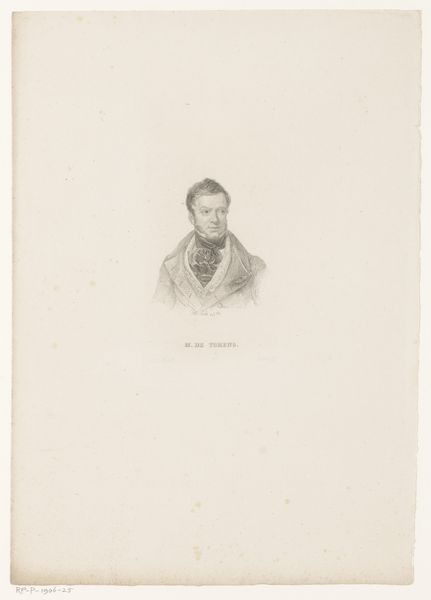
Dimensions: height 540 mm, width 400 mm
Copyright: Rijks Museum: Open Domain
Editor: So, here we have Charles Baugniet's "Portret van F. Magnée," made sometime between 1824 and 1886. It’s a pencil drawing on paper, currently at the Rijksmuseum. It gives off a really formal and almost melancholic mood to me. What do you see in this piece? Curator: I see more than just a formal portrait. Consider the context: Baugniet created this during a period of significant social upheaval. Who was Magnée? The inscription describes him as “Premier Calligraphe du Roi”, a scribe to the king. And what did it mean to be a royal calligrapher during the rise of industrial printing? Was this portrait an attempt to preserve the dignity of craft in an era of increasing mechanization? Editor: That’s an interesting angle. I hadn't thought about it in terms of labor. Curator: Think about it: The meticulous detail of the pencil work is itself a statement. Was Baugniet consciously elevating Magnée's status as a craftsman against the backdrop of societal shifts? Also, what does it signify to have a portrait of a calligrapher at this moment in history? Is it celebrating a fading art form, or perhaps, is it imbuing the sitter with agency? Editor: So, by focusing on the social and political changes, we can read it as more than just a likeness of a man. It's almost like a quiet protest against industrialization. Curator: Precisely! And that reading opens up avenues to consider the role of art, even portraiture, as a commentary on power dynamics, class, and the anxieties of progress. Editor: I definitely have a richer understanding of the portrait now! It is so much more than a face; it tells a story of social change, loss and perseverance. Thanks! Curator: Indeed. Analyzing art through a socio-historical lens illuminates the ways in which the seemingly mundane becomes a powerful site for expressing complex human experiences and struggles.
Comments
No comments
Be the first to comment and join the conversation on the ultimate creative platform.
